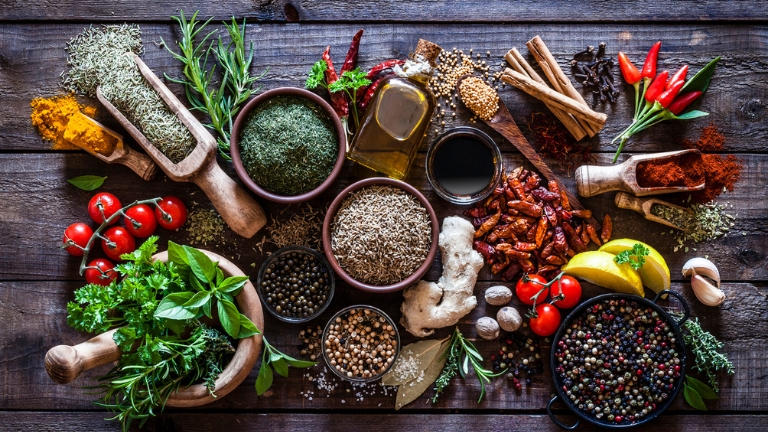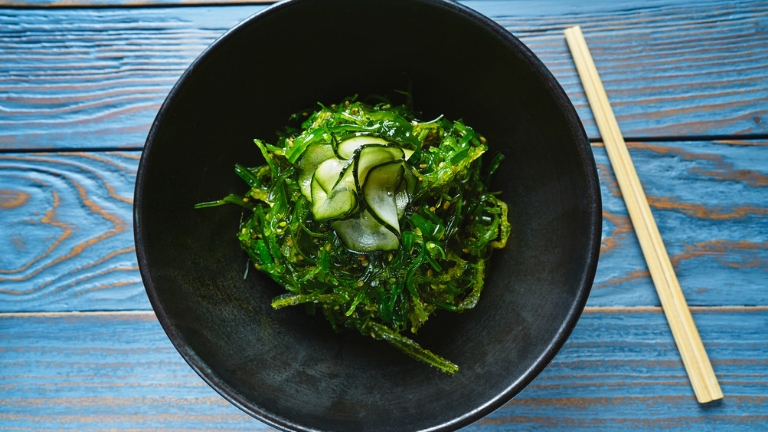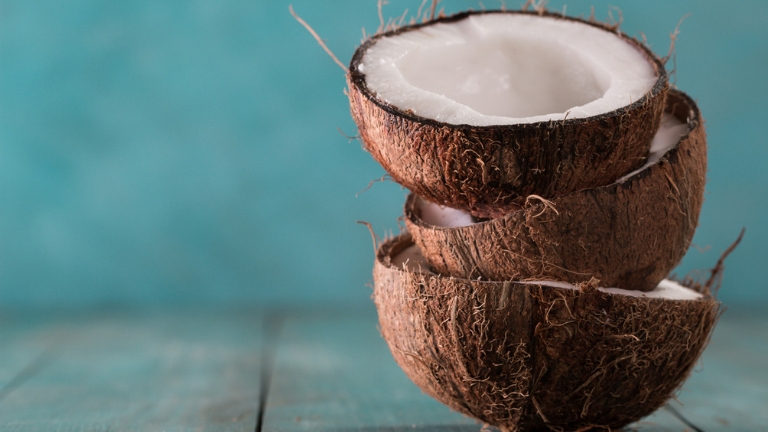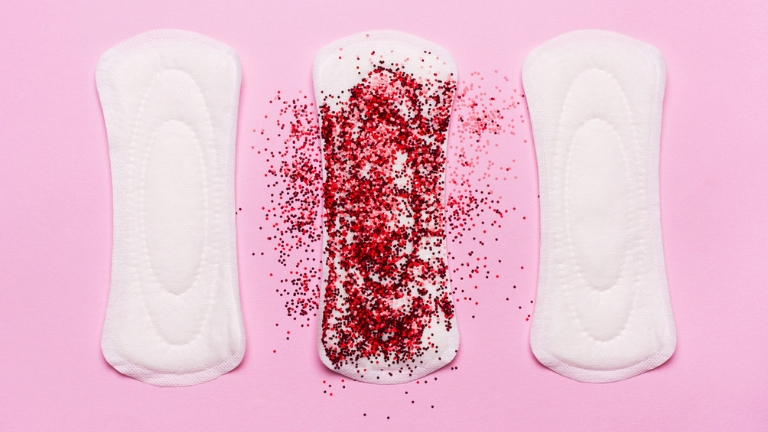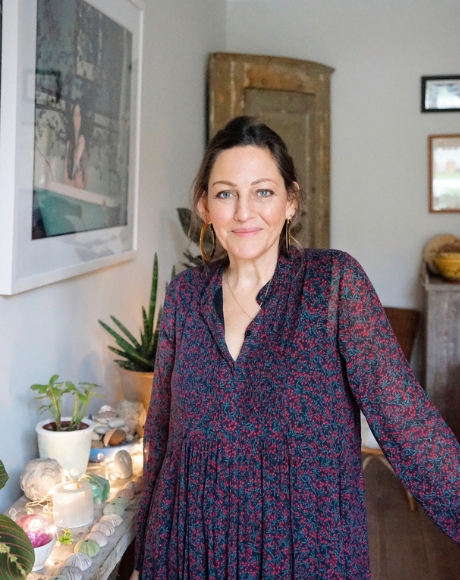Emma Cannon, a women’s fertility and health expert and author of the book Fertile, explains cycle phases, periods and how to eat to optimise your hormones
In the past few years, periods are starting to get the recognition they deserve. It seems ridiculous to me that women have had to hide their periods for so long, the walk of shame to the toilets with the tampon hidden up the sleeve is something many women identify with. Our periods are the heart of our feminine nature; a cycle of fertility and renewal, the source of all life. Now, that is pretty awesome.
Connecting with your cycle
In my work, I’ve found that when women connect with their cycle and begin to understand what it all means, it can be powerful. I encourage patients to track their menstrual cycle – the full month of growth, development and renewal. They are usually amazed when they discover it has such a big effect on the way they feel, act and perform throughout the month.
Obviously getting to know the details of your cycle is important for women who are trying to get pregnant but it’s equally valuable to get to know your blood and cycle even if you’re not trying to get pregnant. Even if your menstrual cycle has always been a source of pain for you, I encourage you to engage with it. This is the starting point for a positive and life-long relationship with your cycle and with your body.
Start by keeping a period diary
To begin, I advise patients to keep a simple diary where you document each day of your cycle, how you feel emotionally, your energy levels and also other symptoms such as secretions and discharge, mood, pain, appetite and so on. Each month, note the length of your cycle, too.
In Chinese medicine the flow and quality of the period is meaningful and offers a unique insight into the health and fertility of a woman. This is where the below division of the menstrual cycle into the four phases I explain originated. That’s why the advice for each one includes some terms from Chinese medicine – if you’re not familiar with them, they are explained in the text.
I hope getting to know your cycle this way will give you a deeper understanding of your body. Day one of your cycle is the first day of your period. For those of you with no periods, please use the next full moon as a ‘pretend’ Day 1 of your cycle and then adapt the advice over the following 28 days. For those of you with an irregular cycle, I suggest post-period you follow the Nourish advice and during your period follow the Move advice.
1. FOLLICULAR PHASE: Days 1-14
MOVE: days 1 – 5 /7 (approx)
Right now, the lining of your uterus is shedding. You’re producing lots of oestrogen as a dominant follicle in the ovary begins to grow, in preparation for an egg being released at ovulation (mid cycle). Progesterone is at its lowest level. This stage is all about activating movement so that the endometrium is sufficiently shed as the period.
Foods to eat: Appetite is normally reduced at this stage in the cycle so eat easy to digest foods. Food that energetically encourages the regulation and movement of Blood and Qi such as chestnuts, chili, chives, crab, egg, kohlrabi, leeks, liver, mustard leaf, onions, peaches, radishes, saffron, spring onions, sticky rice, turmeric and vinegar are all ideal.
What to do: Gentle exercise is also great at this time to help support the endometrium being fully shed. But do not exercise excessively during your period and especially, don’t get cold. Good ways to exercise are: walking, yoga and gentle to moderate classes rather than swimming or HIIT.
Wellness tip: increase your dental hygiene – I suggest oil pulling. The glucose content in your saliva is highest at the start of your menstrual cycle.
NOURISH: days 7 – 13 (approx)
As soon as the bleeding has stopped – it’s slightly different for everyone but usually day 5 to 7 – this is the time to nourish the body. The dominant follicle is maturing in the ovary and will be released at ovulation. The right foods can help the development of the follicle and ultimately the quality of the egg (I’m not talking about changing DNA here, but about the energetic integrity of the egg). The lining of the womb is also thickening and the cervix is beginning to produce fertile mucus.
Unless you have the heaviest of periods most women feel pretty good at this time. Oestrogen is pumping and your brain and decision-making benefit from this. By the end of the Nourish phase at days 12-13 oestrogen and testosterone are on full release and you are feeling very confident and perky and ready for anything.
You are about to enter the most creative phase of your cycle.
Food to eat: Nourishing foods are key now to support Blood and Blood nourishing foods: aduki beans, apricots, beef, beetroot, bone marrow, cherries, dandelion, dates, eggs, figs, grapes, kale, kidney beans, leafy greens, mussels, nettle, octopus, oysters, parsley, sardines, seaweed, squid, rice, temple and watercress.
Yin nourishing foods: apples, asparagus, avocado, cheese, clams, crab, duck, eggs, green beans, honey, lemons, malt, mangoes, milk, nettles, oysters, pears, pineapples, pomegranates, pork, seaweed, sesame seeds, spelt, spinach, tomatoes, yams, watermelon and wheat.
Wellness tip: day 13 is the best day of the cycle to have a Pap smear to detect cervical cancer- this is because the cervical mucus is thinnest
Mood: On days 1-13 serotonin levels are normally pretty good as when oestrogen is high so is serotonin; life is breezy.
LUTEAL PHASE
STIMULATE: days 14 – 18 / 19 (approx)
The ovaries, upon prompting from the pituitary gland’s follicle stimulating hormone (FSH) begin to prepare about twenty cells, eventually ending up with one chosen ripe egg out of one chosen ripe follicle. The cell within the follicle that will become an egg is called an oocyte; the largest cell in the human body.
With oestrogen and testosterone at their highest your libido is high and you are at your most attractive; eyes widen and lip volume increase all designed to make you more attractive to the opposite sex.
As oestrogen and testosterone decrease; this can have you reaching for your personal poison be it sugar, caffeine or alcohol. This is a good time to meditate and calm the mind, especially as your mood might be affected. Anxiety and tearfulness are common as the hormones shift.
Progesterone is rising. This phase of the cycle involves the release of a mature egg at ovulation, then that egg’s smooth passage down the Fallopian tube. Your emotions are important in this phase, especially if you’re trying to get pregnant. Try not to over focus on pin-pointing the exact moment of ovulation.
Progesterone is said to influence a woman’s spending habits; as our progesterone rises apparently so does our need for all things comfortable, cosy and maternal.
What to eat: Eat well in the morning; oats are ideal. In the evening, eat lightly. Going to bed after too much food will make the system very stagnant, the opposite of what we’re trying to achieve in a fertile body, as well as not being good for the libido.
Eat stimulating foods such as almonds, cashews, cardamom, carrots, cayenne pepper, coconut, chicken, dates, eggs, fennel seeds, figs, grapes, millet, molasses, oats, ginger, rice, sardines, shiitake mushrooms, star anise, squash and tangerine peel.
Wellness tip: you are at peak performance but you can get a bit wired or stressed. Coconut oil massage is a brilliant remedy to relax you or your partner as research suggests it lowers the heart rate and reduces stress.
What to do: serotonin is declining and noradrenalin is rising and this can result in tempers flaring. Exercise, acupuncture and anything else that releases serotonin will be helpful. Your brain is shifting from left-brain logical and analytical to right brain creativity and feeling so it’s a good idea to focus on creative things. Light a candle, use some aromatherapy oils, and write your feelings down. Get in touch with your emotions; perhaps this will stop the temper from bubbling over in the pre-menstrual phase.
WARM phase: days 20 – 28 (approx)
If a sperm has not fertilised an egg and pregnancy has not occurred, progesterone and oestrogen levels will reduce and a period will follow. Implantation is where the fertilized egg (now called an embryo) embeds on the uterus wall which occurs 10 days after fertilization.
Physicians of Chinese medicine have advocated the importance of a warm womb to fertility for thousands of years. In clinic, I encourage women to keep warm in particular during this phase of the cycle. Put your hands on your abdomen – if it’s cold to touch, here are some ways to warm up your body.
What to eat: Warming foods such as almonds, beetroot, carrots, cayenne pepper, chicken, chocolate, cinnamon, cloves, figs, garlic, ginger, mustard, nutmeg, peaches, peppers, pumpkin, radishes, sesame seeds, squash and tomatoes (cooked).
What to do: Keeping your feet and midriff warm, avoid draughts; avoid any cold foods and drink.
Wellness tips: keeping a calm mind is important so meditation can help you balance your emotional responses. Acupuncture is particularly helpful in this phase of the cycle as it can help reduce bloating and calm an irritable mood.
The rise in progesterone can make you more tired. But ironically even though you are at your most tired you might find it hard to actually sleep.
What is your specific cycle may tell you about your fertility
The length of the cycle is determined by the number of days from the first day of the bleed to the start of the next bleed. It is not measured by the amount of days you bleed for; this is described as the length of the period. The length of your cycle, if not on any form of contraception, is an insight into whether hormonal imbalances exist. It is also an indicator of whether ovulation is actually happening regularly. Without ovulation pregnancy cannot occur.
Normal menstrual cycle
Days: 23 to 32 days (although some doctors give a bigger range I have seen as big as 21-35)
What does this mean? Regular cycles are a good sign that all is well and the likelihood is that the hormones are balanced and that ovulation has occurred. Ovulation can be confirmed by a day 21 progesterone test (although it is called a day 21 test it should be done 7 days before your bleed so it may vary sightly).
Short menstrual cycle
Days: Less than 23 days
What Does this mean? Short cycles can be an indication that the ovaries contain fewer eggs and that menopause may be approaching. It may also mean you are not ovulating at all or you are ovulating very early in the cycle and it is likely the eggs have not matured. A period is not confirmation of ovulation and if blood work confirms low ovarian reserve, pregnancy might be harder. This may also indicate that IVF is not appropriate for you but this would be confirmed by a blood test and a scan to assess the ovarian activity.
Long or irregular cycle
Days: in excess of 35
What does this mean: ovulation is either not happening or it is happening irregularly. In a normal cycle progesterone levels fall and this brings about the bleed (the period). Sometimes the follicle does not mature and does not release an egg, so progesterone is never released. The lining of the uterus continues to thicken and eventually just falls away and bleeding happens. This situation tends to produce a heavy bleed and a prolonged cycle.
This is known as anovulation and is actually the most common cause of infertility. It could be thyroid related or an elevation of prolactin. In the situation of elevated prolactin I frequently see this is women who over exercise; the brain no longer communicates with the ovaries because the energy is diverted away from the reproductive system and ovulation stops. It can also be PCOS (polycystic ovaries syndrome) that is caused by an imbalance in sex hormones.
Heavy bleeding
Days: more than 7 days
What does this mean: it may indicate that ovulation has not occurred or that something is disrupting the lining of the uterus causing clotting.
Why does this happen: it can be due to polyps, fibroids, infection or even cancer
Never had a period or rarely had a period
What does this mean: ovulation is not happening. This can happen in women who are under weight and have a very low BMI. A certain amount of fat is needed for the reproductive system to work properly. If you have never had a period in your life there maybe an issue with the normal development of the uterus or the vagina.
If you had a period and it stopped and you are not of a low BMI or have not recently lost weight or have been over exercising, it could be due to scarring in the uterus (a condition known as Asherman’s). This could be following a miscarriage or termination or another kind of surgery affecting the abdominal cavity.
Emma Cannon is a fertility and women’s health expert, registered acupuncturist, founder of the Emma Cannon Clinic, and a mentor and speaker. With 25 years in clinical practice she has helped countless patients achieve their dream of having a family with her FERTILE METHOD. She is the author of four books including the best-selling The Baby Making Bible. Her fifth book, FERTILE, was published by Vermillion in March 2017.
Bridging the gap between western medicine and the world of complimentary therapies, Emma is an impartial support and guide, helping each individual find the path to healing that’s right for them. Many individuals and couples come to Emma for her unique approach to supporting all aspects of female and male fertility, whilst other patients are seeking relief from difficult symptoms during pregnancy or post-partum.
‘Emma Cannon has launched a series of online programmes to support periods and fertility. For more information on understanding your periods, head to the Becoming Fertile programme at emmacannon.co.uk’
More Healthista Content:
My boyfriend doesn’t satisfy me sexually – therapy
Periods and exercise – How to sync your workout to your menstrual cycle
Like this article? Sign up to our newsletter to get more articles like this delivered straight to your inbox.



